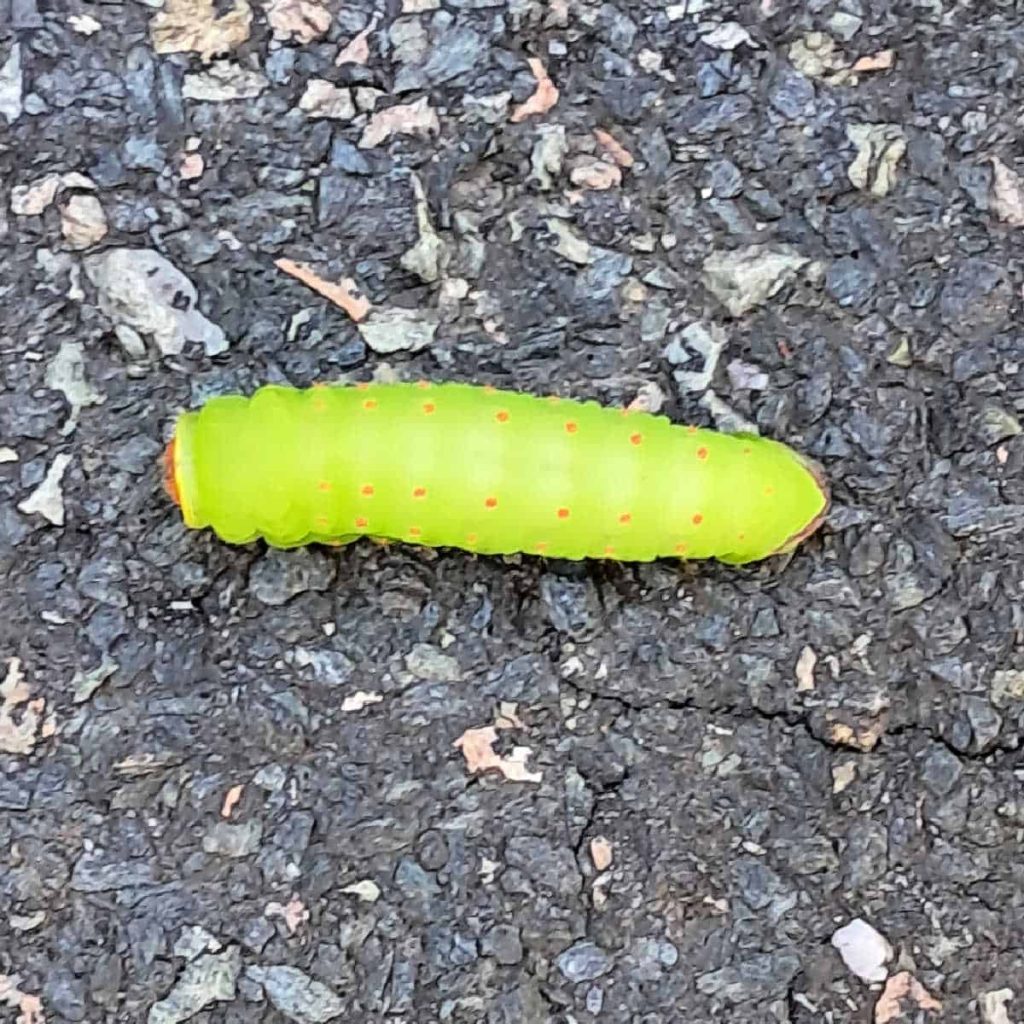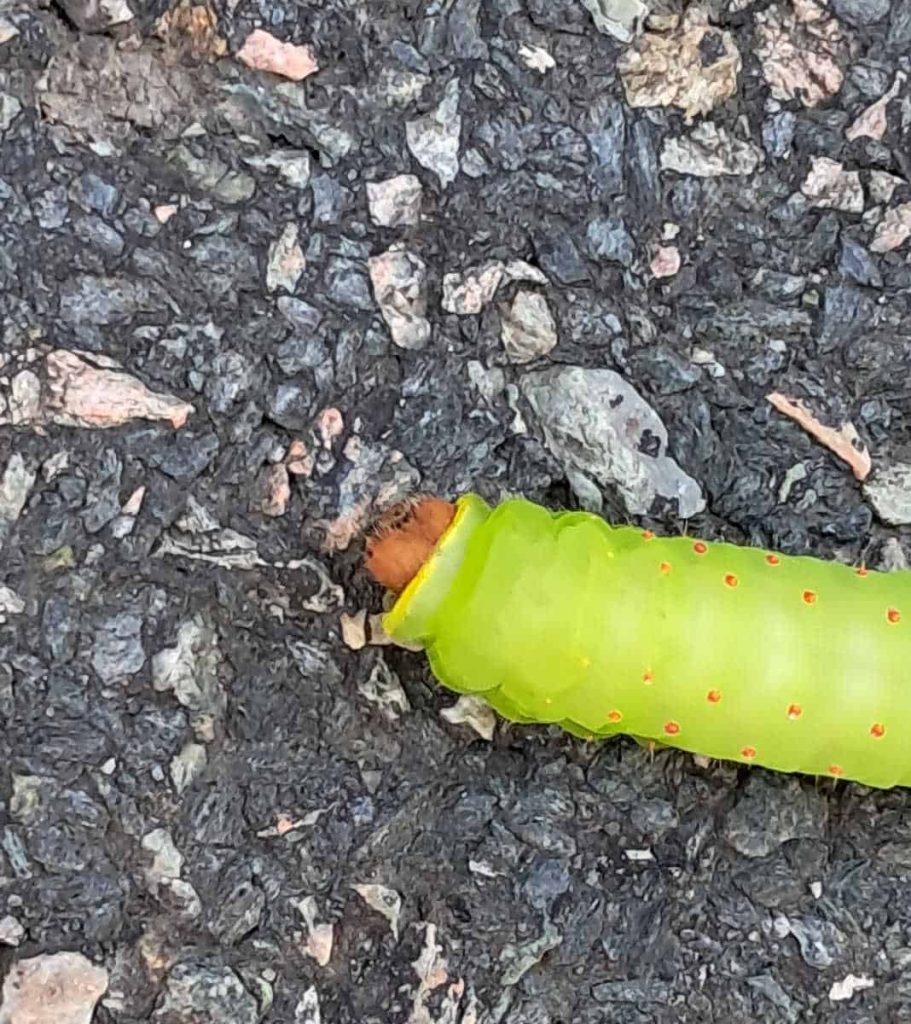We were on our evening walk last night when this beauty crossed our path: a polyphemus moth caterpillar.


What Is the Polymphemus Moth?
The Polyphemus moth (Antheraea polyphemus) is a large and visually striking moth native to North America. It belongs to the Saturniidae family, which includes many of the giant silk moths. Its name comes from Polyphemus, the one-eyed Cyclops in Greek mythology, referencing the prominent eyespots on its hindwings.
Key Characteristics
- Size: Wingspan can reach up to 6 inches (15 cm), making it one of the largest moths in North America
- Coloration: Typically tan to reddish-brown with transparent spots on the forewings and bold, purplish eyespots on the hindwings
- Antennae: Males have large, feathery antennae used to detect female pheromones over long distances
Life Cycle
- Eggs: Laid on a variety of host trees, including oak, birch, willow, and maple
- Larvae: Bright green caterpillars that consume massive amounts of foliage—up to tens of thousands of times their own weight
- Cocoon: Made of brown silk and often wrapped in leaves
- Adult Moths: Do not eat; their sole purpose is reproduction. They live for only about a week
Habitat and Behavior
- Found in forests, suburban areas, and wetlands across the United States, Canada, and parts of Mexico
- The adult moths are nocturnal and attracted to light
What Do They Eat? Are They “Bad” Bugs?
NO, they are not bad bugs! Please don’t squish or kill these beautiful insects. Far too many misguided people think every caterpillar or insect should be killed on sight, and there are very few that deserve that fate. None, I would say, except some are indeed detrimental to crops, and so yes, we do have to kill them. But this big guy – the polyphemus moth caterpillar that looks like something out of Alice in Wonderland? No, leave him alone!
He’s a native of North America and part of our ecosystem here in the United States, so let him do his thing. I hope he finds a nice, safe, snug place to winter over.




